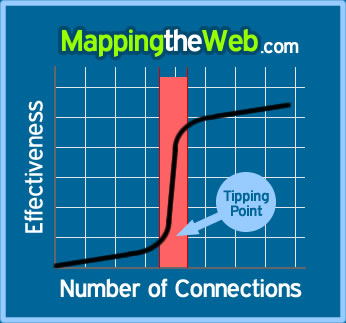Trackbacks - Keep the Discussion Going
Wednesday, February 28th, 2007Internet enthusiasts and non-techies alike can appreciate the value of conversation and the ‘two-way dialogue’ provided by the blogosphere. Unlike the push model of traditional media companies where articles and information are disseminated from the top-down, there is a give-and-take in the blog world. Comments are the obvious example. A given reader can quickly and easily provide his/her opinion on a blog post. What are often overlooked in the blogosphere are trackbacks. This is unfortunate as I believe trackbacks are one of the most important parts of the conversation.
There are certain levels of user participation by readers of a blog. Deeper involvement occurs over a period of time. Firstly, the reader must discover a given blog, whether it be via a back-link, search engine result, or blog roll, for example. Next, the reader will browse the posts and articles to determine if the content is both meaningful and useful to them. If so, the RSS feed may be added to their reader. At this point, the reader may comment on a personally stimulating post, or may refrain until a later time. User-participation and commenting are two of the most sought-after actions by bloggers.
Commenting isn’t the only way a reader can get ahold of a blogger. Some bloggers encourage e-mail correspondance or communication over an instant messenging client. I highly encourage both.
Finally, we come to trackbacks - probably one of the most useful, underrated aspects of blogging.
As defined by Wikipedia, trackbacks (or pingbacks) are “methods for Web authors to request notification when somebody links to one of their documents”. In the blogosphere, a trackback appears below a blog post when another blogger has linked to that specific post. In other words, the trackback is coming from a blogger who has additional information to provide or an alternative view, with respect to the original post.
These are what keep the discussion going in the blog world. If every blog post had a trackback, the conversation would be perpetual. A personal goal of mine is to have at least one trackback per post at some point in time. This would ensure all conversations I start or continue live on.
Although comments are nice, trackbacks are the ultimate form of participation. Comments are more pervasive and widespread, as they aren’t labour-intensive or overly time-consuming. But they do provide an opinion or perspective on the reader’s behalf. Trackbacks, on the other hand, are much more labour-intensive and time-consuming. If a blogger provides such a linkback, he/she has not only gone to a lot of trouble in terms of evaluating the topic of the post itself, but also formulating a blog post of their own. This is not only flattering in some ways, but also very productive for all blog enthusiasts - authors and readers alike. It provides a deeper view and insight into the topic at hand.
For this very reason, trackbacks should be given more light, if not the spotlight. They are both powerful and meaningful. They are the black sheep of the blogosphere.
